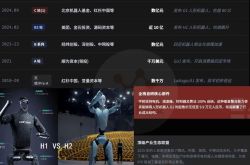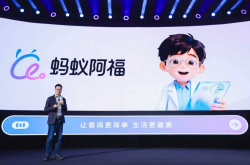Every 10 Cars Sold, 6 Are New Energy! September Auto Market Witnesses Complete Transformation
![]() 09/22 2025
09/22 2025
![]() 449
449
Text by Wang Xin, Illustrations by Yang Lingxiao, Presented by Electric New Species
The latest data from the Passenger Car Association reveals that new energy vehicle sales in September are anticipated to hit 1.25 million units, whereas gasoline vehicle sales are projected to reach only 900,000 units. New energy vehicles surpassed gasoline vehicles by 350,000 units, with the market penetration rate soaring to 58.1%.
This indicates that nearly six out of every ten passenger cars sold are new energy models. Judging from the monthly data, it's evident that new energy vehicles have solidly established their market dominance.
In August, the market penetration rate of new energy vehicles just surpassed 55%, but it climbed further in September. This growth is not accidental; rather, it stems from policy support, enhanced product competitiveness, and increasing consumer acceptance.
Particularly during the traditional peak sales period of 'Golden September and Silver October,' manufacturers intensified their promotional efforts, propelling new energy vehicle sales to unprecedented heights. However, it's worth noting that the trade-in policy is gradually tightening, and the future market may encounter some uncertainties.
Nevertheless, the September data unequivocally shows that the future of the automotive market belongs to new energy vehicles.
01 New Energy Vehicles Triumph Beyond Sales Figures
The robust sales of new energy vehicles are not solely dependent on policies. The products themselves are undergoing significant qualitative transformations.
From the data of the first week of September, the Wuling Hongguang MINIEV sold 10,061 units, topping the sales charts for all vehicle models in China. It is affordable, practical, and cost-effective to charge, making it an ideal choice for urban commuting. With over 1.7 million cumulative users, it's equivalent to the total number of cars in a medium-sized city.
The Geely Xingyuan followed closely with 8,255 units sold, becoming one of the fastest-delivered models in the pure electric market. It demonstrates with its technology that a low price does not necessarily mean low quality.
It's not just small cars that are performing well. In the 100,000-200,000 yuan price range, three models from BYD—Qin PLUS, Seal 06, and Qin L—simultaneously made it to the top ten weekly sales. Even the Tesla Model 3 remains firmly at the top of the high-end pure electric sales chart.
In contrast, the market share of gasoline vehicles is rapidly declining. The Volkswagen Polo sold only 12 units in a single week, and the Honda Fit had a nationwide monthly sales figure of just 23 units (August data). These once-popular family cars, even with price reductions of 30,000 yuan, are struggling to attract buyers.
Consumers are not blindly following new trends. They can calculate the costs: electricity costs only 5 cents per kilometer, maintenance is one-third of that for gasoline vehicles, and there are no driving restrictions. These are experiences that gasoline vehicles simply cannot offer.
02 Policy Withdrawal? No, It's the Market Taking the Lead
Many are concerned that the strong sales of new energy vehicles are solely due to policy subsidies. Indeed, the tightening of trade-in policies in various regions in August prompted some people to make purchases ahead of time. However, policies are not the only driving force.
The Passenger Car Association points out that despite subsidy adjustments, the traditional peak sales season of 'Golden September and Silver October' remains effective. Manufacturers strive for higher sales volumes at the end of the quarter, launching more new models and promotions, which have reignited market enthusiasm.
More importantly, the product lineup is becoming increasingly diverse. From the 28,800 yuan Hongguang MINIEV to the 300,000 yuan BYD Dolphin Surf Edition (European debut) and the million-yuan Yangwang U8, new energy vehicles now cover all price ranges.
Around the Chengdu Auto Show, several new electric models were densely launched, including the Arcfox T1 and Binguo S, with deliveries starting even before their official market launch. The attention and enhanced experiences brought by these new models far exceed those stimulated by policies.
03 Chinese Vehicles Truly 'Going Global'
The surge in Chinese new energy vehicles is not confined to the domestic market but is also occurring overseas.
At the Munich Auto Show in September, 116 Chinese exhibitors participated, making China the country with the most exhibitors outside of Germany. Brands such as BYD, XPeng, Leapmotor, and Hongqi made collective appearances, no longer just 'testing the waters' but truly entering the European heartland.
BYD announced that its Hungarian factory will be completed by the end of 2025, with the Dolphin Surf Edition set to be the first mass-produced model. XPeng collaborated with the Magna factory in Austria, with the G6 and G9 already in mass production in Europe. The Leapmotor B10 model will be launched in over 20 countries this year.
Supply chain companies are also expanding globally. CATL unveiled its new generation Shenxing Pro battery and is building production bases in Germany, Hungary, and Spain. QCraft announced the establishment of its European headquarters in Germany, and Momenta partnered with Uber, planning to operate Robotaxi services in Munich by 2026.
These moves demonstrate that the Chinese new energy vehicle industry is no longer 'building cars in isolation' but is comprehensively exporting technology, manufacturing, and services.
European automakers are also beginning to learn from China in reverse. The Audi Q6 e-tron incorporates Huawei's intelligent driving technology, and BMW stated that its new generation of models 'cannot be completed without Chinese suppliers.'
Summary: The 'Celebration' of Electric Vehicles and the 'Silence' of Gasoline Vehicles
The Chinese auto market is undergoing an irreversible electrification transformation. The September new energy vehicle sales of 1.25 million units and a market penetration rate of 58.1% are not the endpoint but a new starting point.
New energy vehicles are winning not just because of policies but also due to their superior products, experiences, and cost-effectiveness. Gasoline vehicles are struggling to sell not because people don't enjoy driving but because they have found better alternatives.
From the Hongguang MINIEV to the BYD Dolphin, from domestic bestsellers to European factory establishments, Chinese new energy vehicles are redefining the term 'automobile.' It is no longer just a means of transportation but a new species that is intelligent, eco-friendly, and global.
Policies may adjust, and markets may fluctuate, but the trend is irreversible. Just as smartphones replaced feature phones, electric vehicles replacing gasoline vehicles is only a matter of time.







